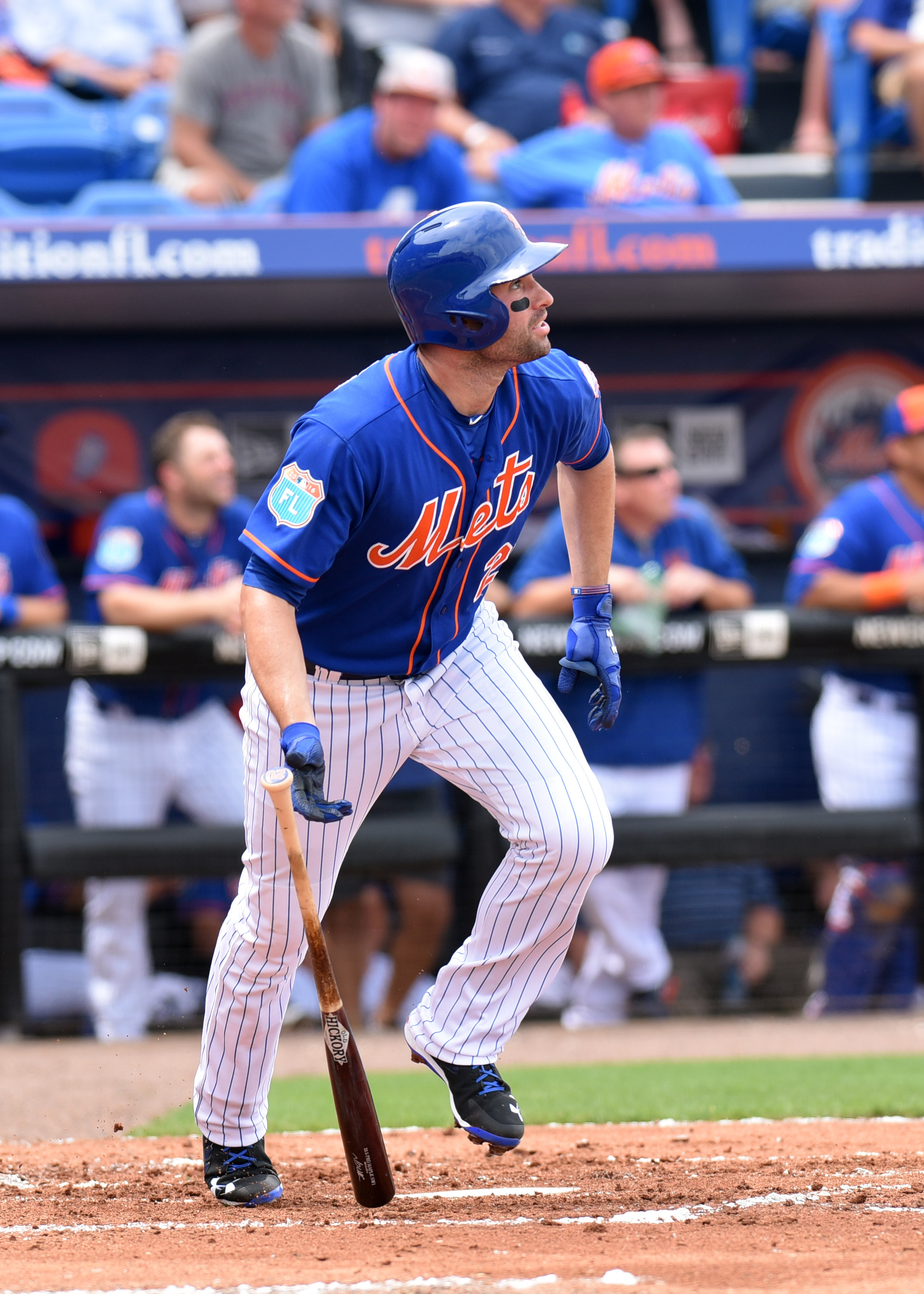I’ve been thinking a lot about Daniel Murphy lately when I should be thinking a lot more about Neil Walker, since the former decamped for a new contract in D.C. while the latter is in Mets colors for the here and now. But after last season’s playoff run and Murphy’s subsequent departure for the Mets’ most current (and geographically relevant) rival, what I keep coming back to a feeling of instability. Sorry, Joe Moock traumatized me from an early age on this very topic.
Specifically, that would be “The Ballad of Joe Moock,” which Steve Rushin penned for Sports Illustrated back in 1998. The Mets had cycled through more than 110 third basemen in their 36-year existence and Rushin’s extended rhyme called on each and every one of them in turn. That the Mets couldn’t lock down the hot corner was a well-known gag even by that time, but I suppose this epic poem instilled in me that nothing is permanent or given or expected, especially when it comes to (of all things) third freakin’ base.
David Wright, of course, killed that particular narrative around 2004, but it’s been supplanted by another infield position since then. As Adam Rubin helpfully noted, second base has been quite the epicenter for annual April turnover. Since 2003, Opening Day starters have included:
2002-2003: Roberto Alomar (222 career games as a Met)
2004: Ricky Gutierrez (24)
2005: Kaz Matsui (239)
2006: Anderson Hernandez (81)
2007: Jose Valentin (188)
2008-2010: Luis Castillo (365)
2011: Brad Emaus (14)
2012-2013: Daniel Murphy
2014: Eric Young Jr. (209)
2015: Murphy
We’ve already talked what it means to ascribe a disproportionate level of meaning into the one-day sample size otherwise known as Opening Day, but this kind of annual abandonment can do things to a person. Yes, second base feels like a historically difficult position to lock down for any extended period of years, but this feels agonizingly inept. (Brad Emaus! That was a real person!) So beyond his magazine cover-worthy playoff heroics last October, Murphy was familiar, maybe not in the Wrightian sense but a certain amount of emotional investment had been put down on his staying at second base, now and for some time to come. But after 903 games as a Met–and more half of those played at second–Murphy is gone and in steps Neil Walker, acquired from Pittsburgh in the trade for Jon Niese.
I have to imagine that whatever Mets fans felt about Murphy, Pirates fans felt something similar for Walker. Both, until this week, had played their whole career for one team. Both established reputations as players who could hit in the top half of the order and provide a little pop when needed. Let’s do a blind comp:
Player A (age 31): 3,619 PA, TAv .274, .331 OBP, 228 2B, 62 HR, 57 SB, -2.6 dWAR (Baseball-Reference)
Player B (age 30): 3,430 PA, TAv .279, .337 OBP, 174 2B, 93 HR, 27 SB, 0.6 dWAR (Baseball-Reference)
Player A shows a bit more speed and a power stroke that is more attuned to two-baggers than four. Meanwhile, Player B is a much more capable defender, has more overall power, and is also a year younger. Take it all in and which would Mets prefer? It’s not even a question, really. Player B, all the way.
Which means Walker (Player B) is actually a pretty decent upgrade over Murphy, and it cost Sandy Alderson was his seventh starting pitcher. And if Walker wasn’t slated to hit free agency after this season, you could safely pencil him in for Opening Day 2017, but there’s a real chance that Walker may walk after this season, as Murphy did after last. That’s worrisome for another time that is not now, but if the biggest argument against Walker is simply that he’s “not Daniel Murphy,” then Mets fans, I suspect, are going to warm to him pretty quickly.
The Mets are hoping for a special season and Walker figures to be a primary part of that coming to fruition. They don’t have a lot of infield depth–especially after letting Ruben Tejada walk–and the younger generation just isn’t there yet. Dilson Herrera is poised to be ready soon, but he’s yet to get the call by the front office. Luis Carpio projects to be a decent everyday utility-type infielder, but he’s still two, perhaps three years away from Citi Field. That means the Mets may yet find themselves in a similar position this offseason, looking for help at an infield position that’s proven elusive to fill in recent years with any long-term certainty.
Somewhere in Louisiana, Joe Moock smiles.
Photo Credit: Steve Mitchell-USA TODAY Sports
